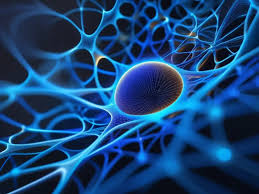Delve into the world of the invisible, where quantum physics and biology converge to explain some of life's most intriguing mysteries. In this space of knowledge, we will address the intriguing topic of "quantum entanglement in biology" and how this invisible connection could unravel some of the deepest mysteries of our existence. 🧬💫
Quantum physics is known as the study of phenomena that occur at the smallest energy scales, at the atomic and subatomic levels. But have you ever wondered how this science applies to biology? The intersection between these two fields of knowledge is what we'll explore throughout this text. 🧪🔬
“Quantum entanglement” is a phenomenon that has puzzled physicists for decades. Simply put, it's the connection that exists between two particles that interact and then separate, such that the state of one can instantly affect the state of the other, regardless of the distance between them. This theory, which was originally applied only to physics, has also found relevance in the study of biology. 🌌🔮
Prepare to embark on a journey that will take you from the fundamental concepts of quantum physics to its application in biology. Together, we will discover how quantum entanglement might be present in biological processes, how scientists are searching for evidence of this phenomenon in nature, and what its relevance might be to our understanding of life as we know it. We are confident that this content will enrich your knowledge and invite you to reflect on the wonders of the universe that surrounds us. 🌍🌠
Quantum Entanglement: What is it?
To understand how quantum entanglement applies to biology, we must first understand what it is. In simple terms, quantum entanglement is a physical phenomenon in which particles remain connected, such that the quantum state of one particle is immediately related to the state of another, regardless of the distance between them.
This phenomenon is one of the strangest predictions of quantum theory, but it has been confirmed in numerous experiments. Albert Einstein, who initially doubted this concept, called it “ghostly action at a distance”.
How does it work?
To understand how quantum entanglement works, let's imagine a hypothetical experiment. Suppose we have a pair of quantum entangled particles, and we separate them, sending them in opposite directions.
According to the laws of quantum mechanics, these particles can exist in multiple states at the same time. But if we measure the state of one of the particles, we will immediately know the state of the other, regardless of the distance between them. This instantaneous connection between particles is what we call quantum entanglement.
Quantum Entanglement in Biology
Now, how does all this apply to biology? Some scientists suggest that biological processes, such as photosynthesis, bird migration, or the sense of smell, may depend on quantum phenomena like entanglement.
Photosynthesis: a quantum process
Photosynthesis, the process by which plants convert sunlight into energy, may be one of the clearest examples of quantum entanglement in biology.
Recent experiments have shown that sunlight energy can travel through plants in the most efficient way possible, thanks to quantum effects. Sunlight energy can follow all possible paths at the same time and choose the most efficient path, a phenomenon known as “quantum random walk”.
Bird migration and sense of smell
Another possible application of quantum entanglement in biology could be bird migration. Some species of migratory birds have a kind of "quantum compass" that allows them to detect the Earth's magnetic field, helping them navigate during their long flights.
Similarly, there is a theory that the sense of smell may involve quantum effects. Some scientists think that odor molecules can trigger reactions in our olfactory receptors through a process called “quantum tunneling”, a phenomenon in which particles cross barriers that, according to the classical laws of physics, would be insurmountable.
Unraveling the Mysteries
Despite the evidence, the exact role that quantum phenomena play in biological processes is still a matter of debate, and many questions remain unanswered. However, the fact that these phenomena can occur on our everyday macroscopic scale is astonishing.

Future Research
Recent advances in technology and quantum physics have allowed scientists to test these phenomena in the laboratory. As our understanding and ability to manipulate the quantum world improves, we may be able to utilize these phenomena in exciting new ways.
For example, if we could understand and replicate how plants use quantum photosynthesis to convert sunlight into energy so efficiently, we could apply this knowledge to improve our own solar energy technologies.
Summary
Quantum entanglement, with its mysterious, invisible connections, may seem like a strange and distant concept. However, this phenomenon may be closer than we think, possibly playing a role in everyday biological processes.
Although we are still far from fully understanding these connections, research in this field is constantly evolving, and each new discovery brings us one step closer to unraveling these mysteries.
Main points to remember
- Quantum entanglement is a physical phenomenon in which particles are interconnected, regardless of the distance between them.
- Biological processes such as photosynthesis, bird migration, and the sense of smell can depend on quantum phenomena.
- As our understanding of the quantum world improves, we may be able to apply these phenomena to exciting new technologies.
Conclusion
In summary, “Invisible Connections: Quantum Entanglement in Biology and Its Unraveled Mysteries” immerses us in the fascinating intersection of physics and biology, revealing how quantum phenomena may play a role in biological processes. Although this field is still in its early stages, the findings discussed are promising, indicating significant potential for future research and applications. Quantum entanglement, once considered exclusively the domain of physics, could have much broader and deeper implications than previously thought. Nonetheless, it is important to remember that we are still at the beginning of this scientific journey, and many mysteries remain to be solved. As science advances, we can expect even more astonishing discoveries on the horizon. Ultimately, this article highlights the power and relevance of quantum entanglement in biology, encouraging the scientific community to continue exploring this intriguing path. Without a doubt, we are witnessing the beginning of a new era in science, one where the boundaries between the physical and the biological are becoming increasingly blurred. 🧪🔬



